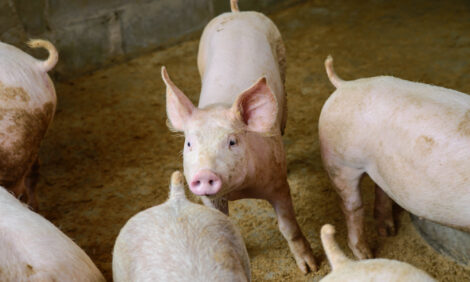



Study evaluates effectiveness of shelterbelts on hog farms
ONTARIO - A new program is helping Ontario hog farmers learn the benefits of using tree shelterbelts to cut down on odour and dust on their farms. In this new partnership between hog producers and conservation authorities, forestry technicians are receiving training on shelterbelt design around barns, while hog producers will benefit through improved odour and wind control.
“This project will benefit hog producers, their neighbours and the environment,“ said Anne Loeffler of the Grand River Conservation Authority who is co-ordinating the provincial project. “When we establish shelterbelts around hog barns, everyone wins.“
Ontario Pork and the Canadian Pork Council are working with conservation authorities across the province to set up demonstration sites on 11 hog farms. Two sites were planted last fall and the remaining nine are being planted this spring. On seven sites, trees are being planted on plastic mulch to establish shelterbelts around hog barns to benefit both the environment and the farmers that work and live on those farms.
Sam Bradshaw, an environmental specialist with Ontario Pork, says the study is an important tool which will help farmers and conservation authorities learn more about the positive benefits of shelterbelts.
“Shelterbelts around barns must be properly designed, in order for them to have long term effectiveness,“ said Bradshaw. “Air flow patterns and barn ventilation systems need to be considered in determining proper shelterbelt location and species selection.“
Trees play an important role by slowing down the wind, sequestering atmospheric carbon, providing wildlife habitat for birds, insects and small mammals, and beautifying the landscape. This $131,000 program is financed by Agriculture and Agri-Food Canada’s Greencover Canada Technical Assistance Program, and will run until March 2007. Test sites have been established in conjunction with the following conservation authorities:
- Grand River Conservation Authority – Glen Morris, Plattsville and Drayton. A fourth site at Jarvis is shared with the Long Point Region Conservation Authority
- Upper Thames Region Conservation Authority – Mitchell and Ingersoll
- Ausable Bayfield Conservation Authority – Grand Bend
- South Nation Conservation – Spencerville and Alfred
- St. Clair Region Conservation Authority – Watford
- Saugeen Valley Conservation Authority -- Mildmay
Farmers who are interested in establishing shelterbelts on their properties can take advantage of the Greencover Canada Program through the Environmental Farm Plan program, which provides up to $10,000 to cover half of the cost of a shelterbelt. To access funding or to obtain assistance in planning a shelterbelt, please contact your local Conservation Authority, or your Environmental Farm Plan Coordinator.
The Grand River Conservation Authority manages water and other natural resources in the Grand River watershed on behalf of 38 municipalities and 925,000 residents.
ThePigSite News Desk








